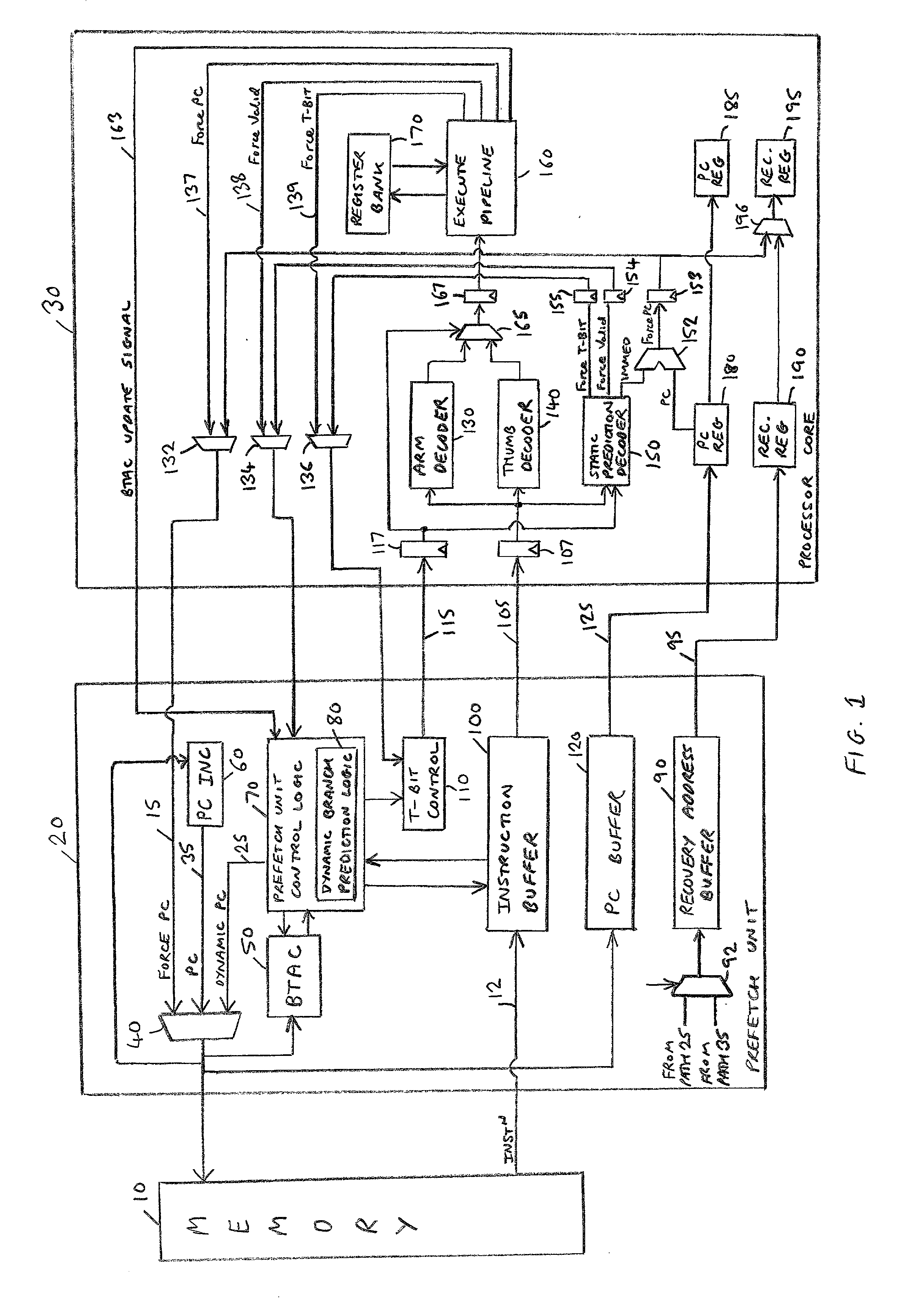Prediction of branch instructions in a data processing apparatus
a data processing apparatus and branch instruction technology, applied in the direction of instruments, specific program execution arrangements, program control, etc., can solve the problems of variable length instructions, inability to predict branch instructions, and inability to have enough bits available for certain instruction sets
- Summary
- Abstract
- Description
- Claims
- Application Information
AI Technical Summary
Benefits of technology
Problems solved by technology
Method used
Image
Examples
Embodiment Construction
[0041] FIG. 1 is a block diagram of a data processing apparatus in accordance with an embodiment of the present invention. In accordance with this embodiment, the processor core 30 of the data processing apparatus is able to process instructions from two instruction sets. The first instruction set will be referred to hereafter as the ARM instruction set, whilst the second instruction set will be referred to hereafter as the Thumb instruction set. Typically, ARM instructions are 32-bits in length, whilst Thumb instructions are 16-bits in length. In accordance with preferred embodiments of the present invention, the processor core 30 is provided with a separate ARM decoder 130 and a separate Thumb decoder 140, which are both then coupled to a single execution pipeline 160 via a multiplexer 165.
[0042] When the data processing apparatus is initialised, for example following a reset, an address will typically be output by the execution pipeline 160 over path 137 as a forced program count...
PUM
 Login to View More
Login to View More Abstract
Description
Claims
Application Information
 Login to View More
Login to View More - R&D
- Intellectual Property
- Life Sciences
- Materials
- Tech Scout
- Unparalleled Data Quality
- Higher Quality Content
- 60% Fewer Hallucinations
Browse by: Latest US Patents, China's latest patents, Technical Efficacy Thesaurus, Application Domain, Technology Topic, Popular Technical Reports.
© 2025 PatSnap. All rights reserved.Legal|Privacy policy|Modern Slavery Act Transparency Statement|Sitemap|About US| Contact US: help@patsnap.com



